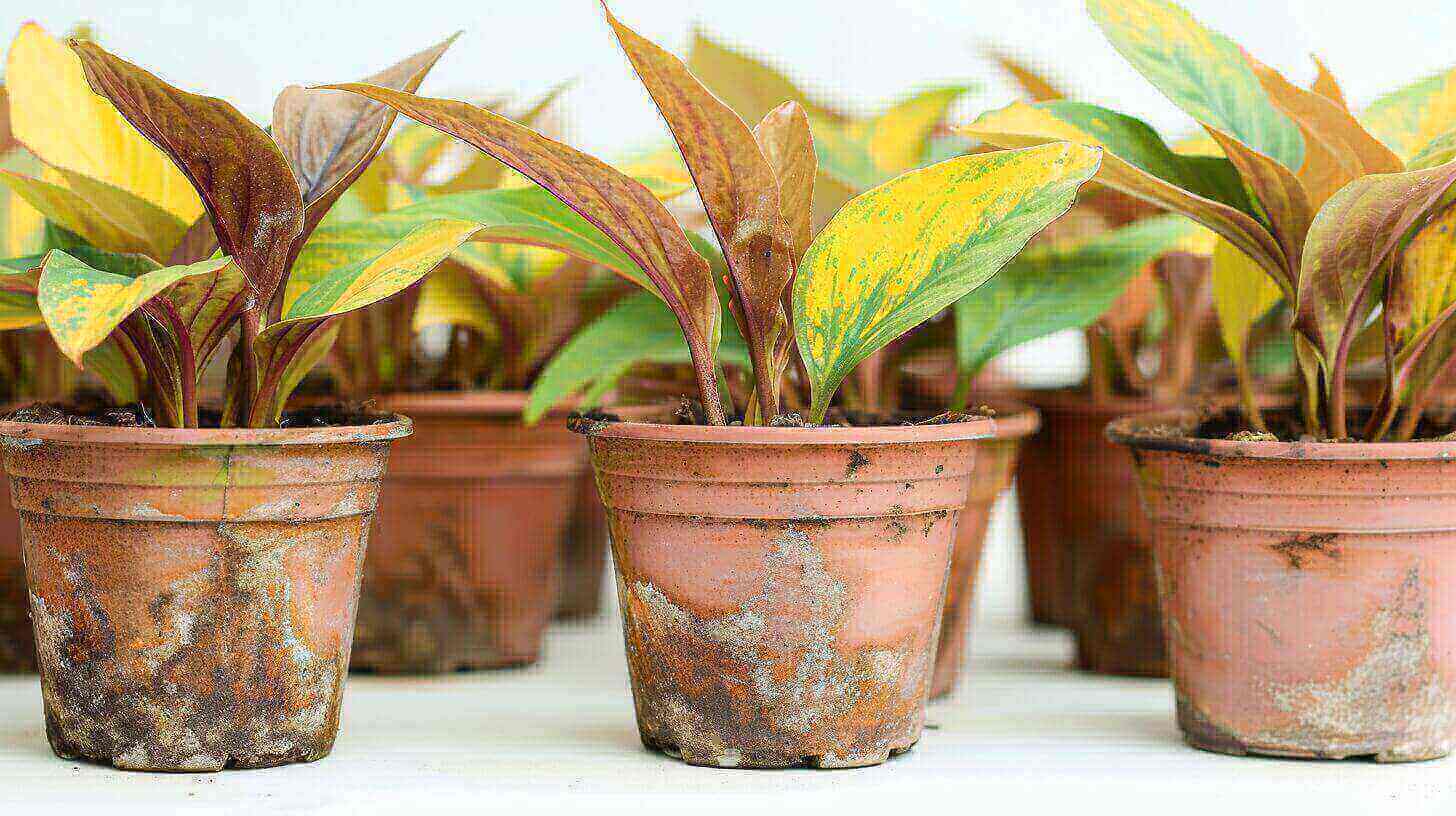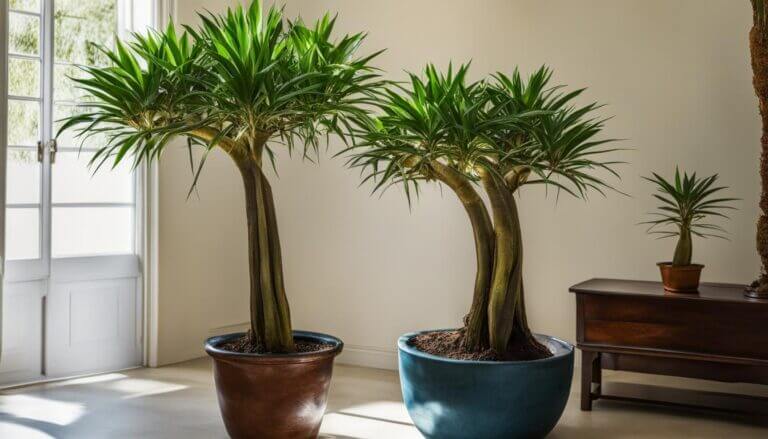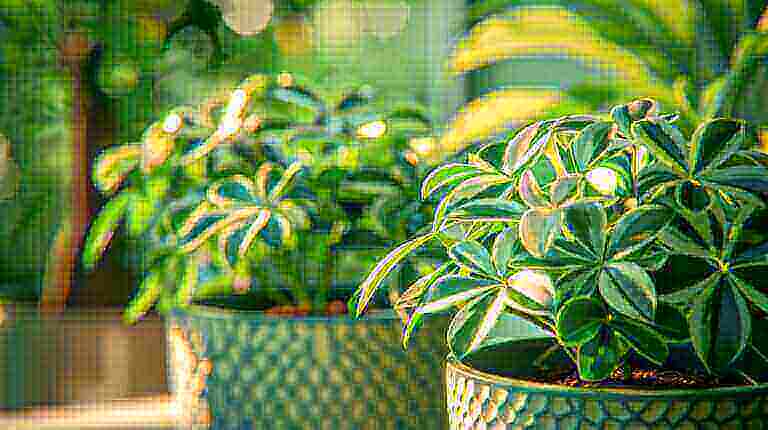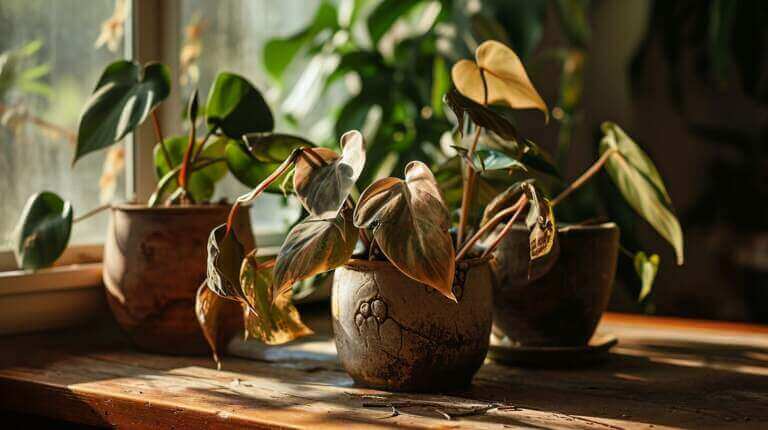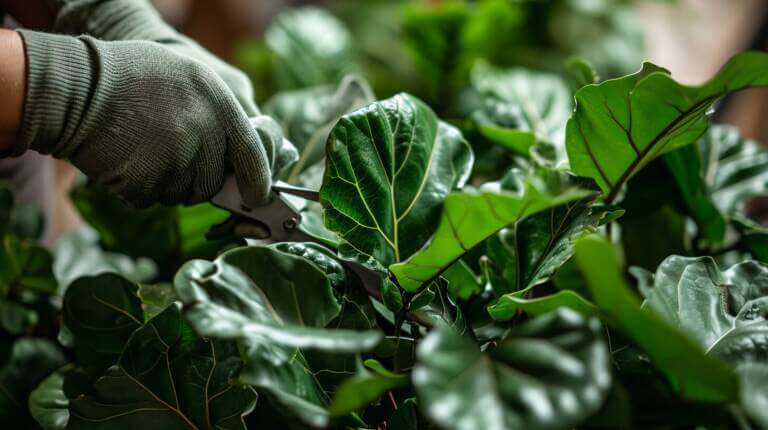Bringing Your Ctenanthe Never Never Plant Back to Life: Care Guide & Fixes for Fading Leaf Patterns
If you’re a proud owner of a Ctenanthe plant and have noticed that its leaf patterns are fading, don’t worry! I’m here to help you bring your Ctenanthe plant back to life and restore its vibrant beauty. Ctenanthe plants, also known as the never never plant or prayer plant, are beloved for their striking variegated foliage. In this article, I’ll provide you with valuable tips and solutions to fix fading leaf patterns and revive your Ctenanthe plant.
Key Takeaways:
- Proper lighting, watering, and soil conditions are essential for the health of your Ctenanthe plant.
- High humidity is crucial for Ctenanthe plants to thrive; using a humidifier or pebble tray can help create the ideal environment.
- Pruning should be limited to removing damaged or dying foliage, and Ctenanthe plants can be propagated through stem cuttings or offsets.
- Common problems with Ctenanthe plants include dehydration, overwatering, sun scorch, and pests like spider mites.
- When buying Ctenanthe plants, choose healthy specimens and inspect them for any signs of pests or damage.
Ctenanthe Care Guide: Light, Water, and Soil Requirements
Proper care is essential for the health and vitality of your Ctenanthe plant. Understanding its light, water, and soil requirements will help you create the ideal environment for it to thrive.
Light Requirements
Ctenanthe plants prefer bright, indirect light. Place them in a location that receives plenty of natural light, but make sure to protect them from direct sunlight. Direct sunlight can cause the vibrant colors of their leaves to fade. If you notice that your plant’s leaves are turning pale or yellow, it may be a sign that it’s receiving too much light.
Water Requirements
The key to watering your Ctenanthe plant is to keep the soil consistently moist but not waterlogged. Wait until the top 1 to 2 inches of soil are dry before watering. When watering, make sure to thoroughly saturate the soil. Any excess water should be drained to prevent waterlogging, which can lead to root rot. Remember, overwatering is just as harmful as underwatering, so finding the right balance is crucial.
Soil Requirements
Ctenanthe plants thrive in well-drained soil that is slightly acidic to neutral. A good potting mix with added perlite can improve drainage and prevent waterlogging. It’s also important to provide your plant with nutrient-rich soil. You can achieve this by using a balanced, slow-release fertilizer or regularly feeding it with a weak liquid fertilizer during the growing season.
By following these care guidelines, you can ensure that your Ctenanthe plant receives the right amount of light, water, and soil conditions it needs to flourish.
| Light | Water | Soil |
|---|---|---|
| Bright, indirect light | Keep soil consistently moist, but not waterlogged | Well-drained, slightly acidic to neutral soil |
| Protect from direct sunlight to avoid leaf fading | Water when top 1-2 inches of soil are dry | Add perlite for improved drainage |
| Drain excess water to prevent root rot | Provide nutrient-rich soil with fertilizers |
Propagating Ctenanthe: Stem Cuttings and Offsets
If you want to expand your collection of Ctenanthe plants or share them with friends, propagating through stem cuttings or offsets is a simple and effective method. By following these steps, you can create new plants that are identical to the mother plant:
Stem Cuttings
- Select a healthy stem with around four leaves from the mother plant.
- Cut the stem just below a leaf node.
- Remove the leaves from the bottom half of the stem.
- Dip the cut end of the stem in rooting hormone.
- Plant the stem in a pot with well-drained potting soil.
- Cover the pot with a clear plastic bag to create a humid environment.
- Keep the soil moist and provide indirect lighting.
- After a few weeks, roots should develop, indicating successful propagation.
Offsets
- Gently remove the offshoot from the base of the parent plant.
- Prepare a small pot with potting medium and perlite.
- Moisten the soil in the pot.
- Plant the offset in the pot, ensuring it is at a similar depth as it was in the parent plant.
- Place the pot in a warm spot with indirect lighting.
- Keep the soil moist and provide high humidity.
- With proper care, the offset will develop roots and grow into a new Ctenanthe plant.
By using stem cuttings or offsets, you can propagate Ctenanthe plants and expand your collection with ease. Remember to be patient and provide the appropriate care needed for successful root development.
Common Problems and Pests of Ctenanthe Plants
When caring for Ctenanthe plants, it’s important to be aware of the common problems and pests that can affect their health and appearance. By understanding these issues and taking appropriate measures, you can ensure the continued vitality of your Ctenanthe plant.
Dehydration
One of the most common problems faced by Ctenanthe plants is dehydration. This can occur when the plants are not receiving enough water, causing their leaves to crimp up and eventually drop off. To prevent dehydration, make sure to water your Ctenanthe plant regularly, but avoid overwatering.
Overwatering
On the other hand, overwatering can also be detrimental to Ctenanthe plants. When the roots are constantly saturated, they can develop root rot, leading to droopy leaves and further damage. It’s crucial to maintain a balance and only water the plant when the top 1 to 2 inches of soil are dry.
Pests
Ctenanthe plants are susceptible to various pests, with spider mites being one of the most common. These tiny insects can cause damage by creating webs or yellow bumps on the undersides of leaves. Other pests that may bother Ctenanthe plants include scale, thrips, and whiteflies. Regularly inspect your plant for any signs of pests and take appropriate action to control and eliminate them.
By addressing these common problems and promptly addressing any pest issues, you can ensure the health and beauty of your Ctenanthe plant. Remember to provide proper watering, maintain the right humidity levels, and monitor your plant for any changes or signs of distress.
Ctenanthe Varieties and Tips for Buying Plants
When it comes to adding a touch of beauty to your indoor space, Ctenanthe plants offer a wide range of vibrant and eye-catching varieties. In addition to the popular Ctenanthe setosa ‘Grey Star,’ there are other stunning options to explore. Ctenanthe lubbersiana showcases green and creamy yellow patterned leaves, while Ctenanthe oppenheimiana features lance-shaped leaves with dark green and silver tops and maroon undersides. For a compact choice, consider Ctenanthe burle-marxii with its elliptical leaves adorned with silvery gray and green stripes.
When buying Ctenanthe plants, it’s important to select healthy specimens to ensure their long-term success. Start by carefully inspecting the plant for any signs of pests or damage. Avoid plants that have yellowing or dying leaves, as these may indicate underlying issues. Additionally, it’s wise to keep newly purchased plants away from other plants in your collection to prevent the potential spread of pests or diseases.
Here are some helpful tips for buying Ctenanthe plants:
1. Evaluate the overall health:
Check for lush, vibrant foliage and a strong, upright posture. Avoid plants with wilted or droopy leaves, as well as those showing signs of discoloration or pest infestation.
2. Examine the roots:
Lift the plant gently from its pot (if allowed) and inspect the roots. Look for healthy, white roots that are well-distributed throughout the soil. Avoid plants with mushy or discolored roots, as this could indicate root rot.
3. Consider the size and maturity:
Choose a plant that suits your preferences and available space. Younger plants may require more time and care to reach their full potential, while more mature plants can provide instant impact.
By following these tips and exploring the diverse range of Ctenanthe varieties, you can find the perfect plant to enhance the aesthetic appeal of your indoor environment.
FAQ
How much light does a Ctenanthe plant need?
Ctenanthe plants thrive in bright, indirect light. They should be placed in a location that receives plenty of natural light but is protected from direct sunlight, which can cause fading of the leaf colors.
How often should I water my Ctenanthe plant?
Watering should be done when the top 1 to 2 inches of soil are dry. It’s important to keep the soil moist but not waterlogged, as overwatering can lead to root rot and leaf fungal issues.
What type of soil is best for Ctenanthe plants?
Ctenanthe plants prefer slightly acidic to neutral soil with good nutrient content. Adding perlite to the potting mix can improve drainage.
How do I increase humidity for my Ctenanthe plant?
Ctenanthe plants require high humidity to thrive. Using a humidifier or placing them on a pebble tray filled with water can help increase humidity levels around the plant.
How do I propagate Ctenanthe plants?
Ctenanthe plants can be propagated through stem cuttings or offsets. For stem cuttings, select a healthy stem with four leaves, remove the bottom leaves, dip the end in rooting hormone, and plant it in well-drained potting soil. For offsets, gently remove the offshoot from the parent plant and plant it in a small pot with potting medium and perlite.
What are common problems and pests of Ctenanthe plants?
Common issues with Ctenanthe plants include dehydration, overwatering, sun scorch, and pests like spider mites. Regularly inspecting the plant for signs of pests and providing proper care can help prevent and address these problems.
What are some popular varieties of Ctenanthe plants?
Some popular varieties of Ctenanthe plants include Ctenanthe setosa ‘Grey Star,’ Ctenanthe lubbersiana, Ctenanthe oppenheimiana, and Ctenanthe burle-marxii. When buying plants, choose healthy specimens and avoid ones with yellowing or dying leaves.

